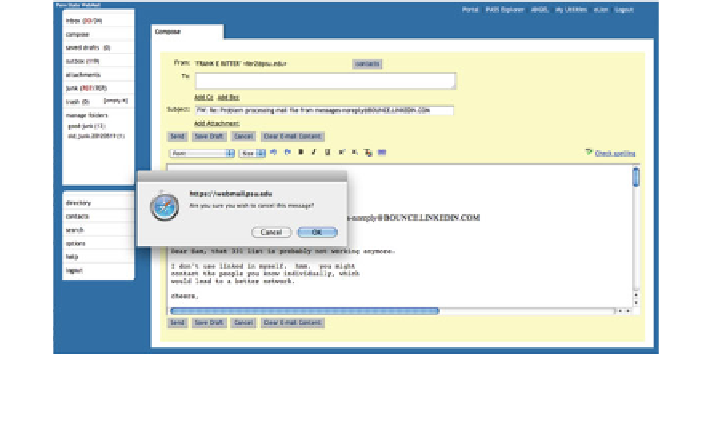Information Technology Reference
In-Depth Information
Fig. 6.14 A bad example of task-action mapping. Which button should you press to cancel the
email, and which button to cancel the canceling of the email, or to OK the sending of the email?
6.4.4.1 Based on Mental Models
Problem solving and decision making are rooted in our world knowledge and
world experiences. Users employ mental models in making decisions: if the mental
model is wrong, the decision is also likely to be wrong. For example, if the user
thinks that one cup of coffee helps thinking, they may reason that four cups might
be four times better (which it patently is not). When you watch people use com-
puter systems, you can often find examples of incorrect models such as the
apocryphal tale of the novice user who looks for an ''Any'' key when asked to
''Press any key to continue.''
It is important to understand how mental models develop and evolve, and how
they are used, so that you can support their development, evolution, and use. The
system should provide the appropriate information needed to make a decision
through displays, or help, or even in the surrounding context. If the information is
difficult to retrieve from memory or to manipulate mentally, you should consider
how you can either avoid or at least mitigate these effects. On solution would be to
remove
information
that
does
not
contribute
to
the
decision,
for
example
(Smallman and St. John
2005
).
6.4.4.2 Confirmation Bias
Users tend to take the line of least effort. They want to find support in the world for
their actions and reasoning steps that shows they were right. They therefore look
for information that confirms their understanding of the situation. The corollary of

Search WWH ::

Custom Search